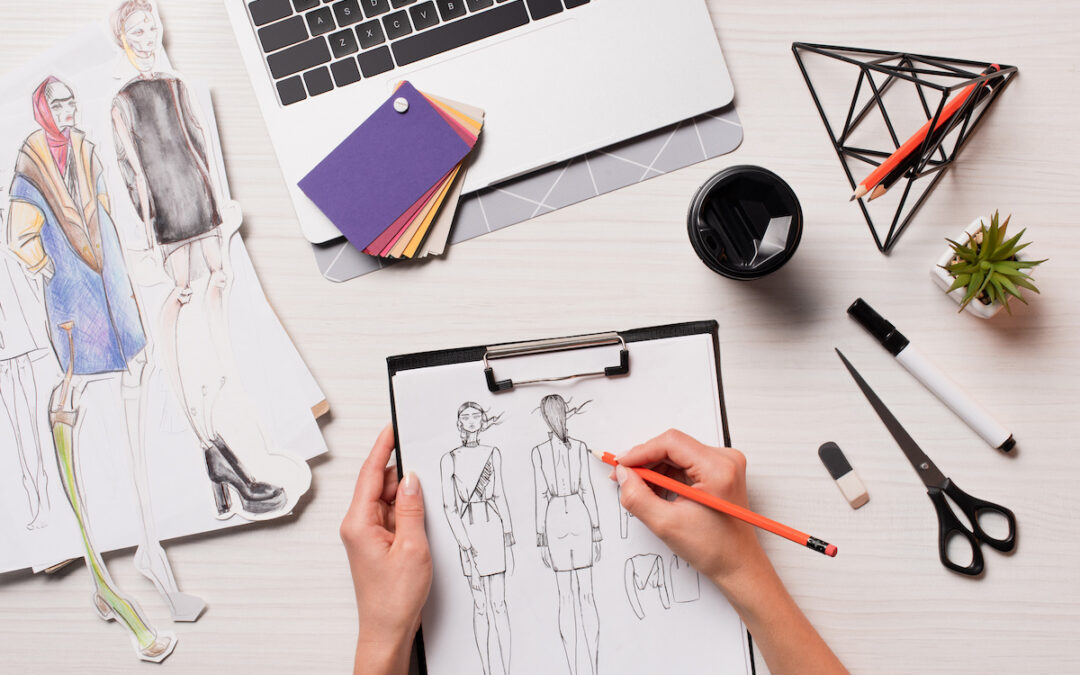Fashion design is an exhilarating career that offers the opportunity to blend creativity with practicality. If you have a passion for fashion and dream of making your mark in the industry, here are five essential tips to help you on your journey to becoming a successful fashion designer. Additionally, we’ll cover the important entrance exams you need to take to pursue a career in fashion design.
- Pursue a Formal Education in Fashion Design
- Why It Matters: A structured education provides a solid foundation in fashion design principles, techniques, and industry knowledge.
- What to Do: Enroll in a reputable fashion design school or institute. Look for programs that offer comprehensive curricula covering design principles, garment construction, textile science, fashion illustration, and fashion history. Some top institutes in India include the National Institute of Fashion Technology (NIFT), National Institute of Design (NID), and Pearl Academy.
- Examples of Courses: Bachelor of Design (B.Des) in Fashion Design, Bachelor of Fashion Technology (B.FTech), Master of Design (M.Des) in Fashion Design.
- Develop Your Skills and Creativity
- Why It Matters: Practical skills and creativity are crucial for translating your ideas into tangible designs.
- What to Do: Regularly practice drawing and sketching to improve your fashion illustration skills. Experiment with different fabrics and techniques to understand garment construction. Stay updated with the latest trends and fashion technologies. Engage in creative activities outside of fashion design, such as painting, sculpture, or photography, to broaden your artistic perspective.
- Focus Areas: Drawing and sketching, sewing and draping, fabric knowledge, trend analysis, and digital design tools.
- Build a Strong Portfolio
- Why It Matters: A wellcurated portfolio showcases your best work and is essential for gaining admission to top design schools and securing job opportunities.
- What to Do: Include a variety of projects that demonstrate your range, creativity, and technical skills. Highlight your unique design style and aesthetic. Ensure your portfolio is wellorganized and professionally presented. If possible, include photographs of finished garments and detailed sketches.
- Key Components: Sketches and illustrations, photographs of garments, design projects, fabric samples, and mood boards.
- Gain Practical Experience
- Why It Matters: Handson experience provides valuable insights into the fashion industry and helps you develop your skills in a realworld setting.
- What to Do: Seek internships or apprenticeships with established designers, fashion houses, or apparel companies. Participate in fashion shows, exhibitions, and competitions to showcase your work. Volunteer for fashionrelated events and projects to expand your network and gain industry exposure.
- Opportunities to Look For: Internships, apprenticeships, fashion shows, design competitions, and industry events.
- Stay Persistent and Network Effectively
- Why It Matters: Building a successful career in fashion design requires persistence, dedication, and strong industry connections.
- What to Do: Stay focused on your goals and continue honing your skills despite challenges and setbacks. Attend fashion events, workshops, and seminars to stay updated with industry trends and connect with professionals. Join fashion design associations and online communities to expand your network. Seek mentorship from experienced designers who can provide guidance and support.
- Networking Platforms: Fashion design associations, industry events, social media, and online communities.
Entrance Exams for Fashion Design
To pursue a career in fashion design and secure admission to top design institutes, students need to clear entrance exams. Here are some of the prominent entrance exams for fashion design courses in India:
- NIFT Entrance Exam
- Conducted by the National Institute of Fashion Technology for admission to various undergraduate and postgraduate fashion design programs.
- Exam Pattern: Comprises a Creative Ability Test (CAT), General Ability Test (GAT), Situation Test (for B.Des), and Group Discussion/Personal Interview (for M.Des).
Becoming a successful fashion designer requires a combination of formal education, practical skills, creativity, and persistence. By following these five tips and preparing for the necessary entrance exams, you can set yourself on the path to a rewarding career in fashion design. Stay passionate, keep learning, and never stop dreaming big. The world of fashion awaits your unique vision and creativity.

